Effective Ways to Remove Water from Your Ears
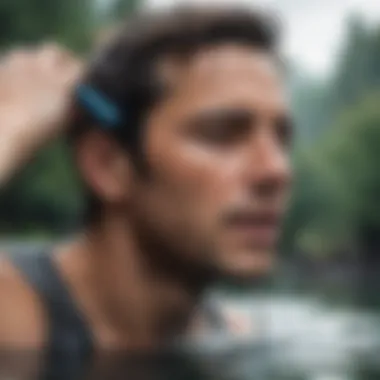
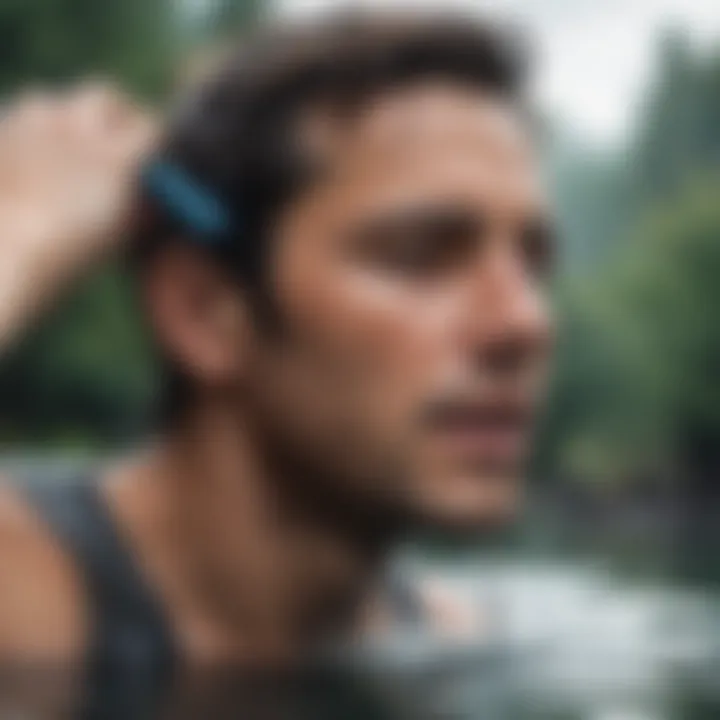
Intro
Water trapped in the ear can be an annoyance, especially for those who love to dive into aquatic activities. Whether you’re paddleboarding, snorkeling, or simply enjoying a day at the beach, dealing with the uncomfortable sensation of water in your ears can dampen your experience. Understanding how to clear this water safely is crucial for maintaining ear health and avoiding potential complications.
This guide aims to provide clear strategies and insights into not just alleviating this common problem but also preventing it in the future. We will explore a range of effective methods tailored for both beginners and seasoned professionals. Also, knowledge of one’s ear anatomy is essential, as it will help you grasp why certain techniques are recommended over others.
Gear Recommendations
Selecting the right gear is important for minimizing the chances of water entering your ears. Below, find a breakdown of essential and advanced equipment suited for various levels of aquatic enthusiasts.
Essential Gear for Beginners
For novice water sports lovers, simplicity is key. Here are some essential items:
- Swim Earplugs: These are specifically designed to block water from entering the ear canal. They provide a snug fit and come in various materials like silicone or foam.
- Waterproof Headbands: Wearing one can prevent water from splashing directly into your ears during activities.
- Diving Masks with Ear Protection: If your sport involves deep diving, investing in a mask that covers your ears can provide an extra layer of safety.
Advanced Equipment for Professionals
For athletes or dedicated divers, enhancing gear becomes necessary:
- Custom-Fit Earplugs: Made from molds of your ears, these earplugs offer the most effective barrier against water.
- Full-Face Snorkel Masks: These masks not only cover your eyes and mouth but also limit water exposure to the ears, especially in turbulent waters.
- Neoprene Hoods: Ideal for colder waters, these can also provide a barrier against water entry into the ears.
Techniques and Tips
Beyond gear, certain techniques can greatly assist in preventing water from becoming trapped in your ears, not to mention effective strategies for clearing it out.
Skill Improvement Strategies
Familiarizing yourself with some practical skills can make a world of difference:
- Learn Proper Head Positioning: When diving or swimming, tilting your head to the side can help water exit more easily.
- Nose Pinch Technique: Close your nose and blow gently, creating pressure that can help expel water trapped within the ear.
- Jaw Movements: Chewing or yawning might sometimes help free any stubborn water.
Safety Practices and Guidelines
Practicing safety around water is paramount:
- Avoid Using Cotton Swabs: Using these can push water further in, leading to blockages.
- Know When to Seek Help: If you experience pain or prolonged discomfort, it’s vital to consult a healthcare professional to avoid infections or other complications.
Remember: Water trapped in the ear isn’t just a nuisance; leaving it unaddressed can sometimes lead to infections or even hearing issues.
By understanding the tools and techniques available, you can enhance your water sports experience, making it more enjoyable and less stressful.
Understanding the Issue of Water in the Ear
When you think about enjoying water activities, the last thing on your mind is likely the discomfort of water getting trapped in your ears. Yet, this is a common issue that many face, especially athletes and enthusiasts who spend considerable time in the water. Recognizing the significance of water in the ear means understanding not just how it happens, but also the repercussions it can have if left unaddressed.
Water trapped in the ear can lead to a myriad of issues, from simple discomfort to potentially chronic health risks. Perhaps you're an adventurous soul who loves diving, or maybe you simply enjoy splashing around in a pool. In either case, the anatomy of the ear plays a vital role in how water accumulates and what it can lead to. Understanding this element provides a strong foundation for effective prevention and management techniques.
The Anatomy of the Ear
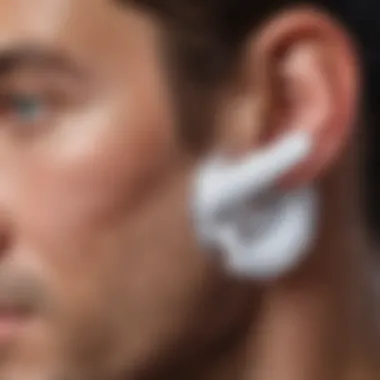
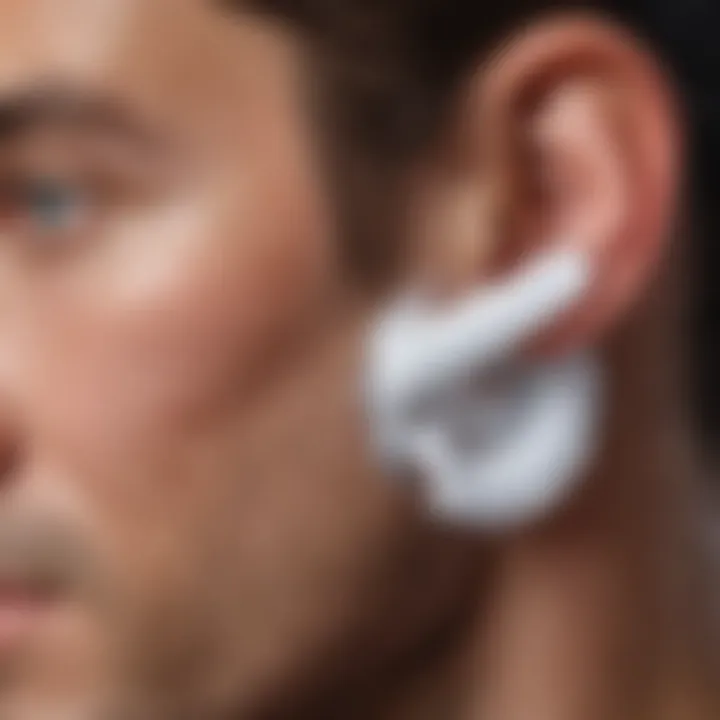
The human ear is a fascinating piece of biology, consisting of several intricate components: the outer ear, the middle ear, and the inner ear.
- Outer Ear: This part collects sound waves and directs them toward the eardrum.
- Middle Ear: Once sound waves reach the eardrum, they cause it to vibrate, moving the tiny bones in this area called the ossicles. In addition to sound conduction, this space can trap water.
- Inner Ear: This section is responsible for balance and hearing; however, it is less affected by water accumulation.
Another key aspect is the ear canal, which naturally forms a curve. This curvature can sometimes make it harder for water to drain out, especially if the ear is filled with fluid.
Common Causes of Water Buildup
Water can get stuck in the ear for various reasons, often stemming from everyday activities:
- Swimming: Whether in a pool, lake, or ocean, splashing water is a given.
- Showering: Water can travel up the ear canal while washing your hair or simply rinsing off.
- Diving: The pressure underwater can force water deeper into the ear canal, which can be particularly troublesome.
- Earwax: Excess earwax can trap water more effectively, making it harder for the fluid to escape, leading to a sense of fullness or muffled hearing.
Understanding these causes is essential for identifying the steps to take afterward. Ignoring the presence of trapped water can lead to infection or complications, as moist environments promote bacterial growth.
As we move into strategies for removal, armed with knowledge about our bodies, we can equip ourselves better when it comes to addressing water issues in the ear. Ignorance isn't bliss in this case; it can lead to more significant hurdles down the line.
Initial Responses to Water Trapped in the Ear
When you find yourself with water stuck in your ear, the initial reactions are vital. They can determine whether you'll feel discomfort for hours or if you can swiftly address the issue. Engaging with these immediate responses can save you from potential complications, steering clear of long-term effects that could stem from moisture lingering in ear canals.
First off, it's essential to stay composed. Panic can often cloud judgment, and that shouldn't be your go-to route. The aim is to analyze what you are experiencing. If it feels like a tight pressure or if there’s an inability to hear properly, it could hint at excess water. Understanding the situation can lead to more effective solutions.
Assessing the Situation
Evaluating the problem at hand can help structure your next steps. Ask yourself a few questions:
- How did the water get in? Was it from diving, swimming, or perhaps a shower?
- Is there any pain or swelling in your ear?
- Have you experienced this before?
By answering these questions, you’ll have a clearer picture of your current situation. If this is a familiar problem, you might already have a preferred technique for addressing it. However, if this is your first rodeo, or if you're not overly familiar with how your ears respond to water, it might be best to proceed with caution.
Knowing when to act and understanding your anatomy will put you one step ahead. For instance, if water is trapped deep, you might think twice about using a cotton swab, as that could worsen the situation. Instead, focus on effective initial responses that can directly relieve the pressure.
Avoiding Common Mistakes
In moments of urgency, it’s easy to resort to methods that fall short. Here’s a short list of traps to steer clear of:
- Overusing Cotton Swabs: They rarely help with water removal and can push the liquid further inside, causing blockage and potential infection.
- Shaking Your Head: While it might seem practical, this often results in more discomfort without effectively releasing the trapped water.
- Inserting Objects into the Ear: Don't try to fish out the water with your fingers or any tools; this can lead to injury or infection.
Instead, focus on gentle approaches, like using gravity to your advantage or a simple tilt of your head. Remember, a little mindfulness in your approach can go a long way in achieving quick, effective relief. In a nutshell, knowing how to assess the situation accurately and avoiding those common pitfalls are essential skills that can help you reclaim comfort after water exposure.
Home Remedies for Water Removal
Finding water trapped in your ear can be a pesky annoyance, especially after a dip in the pool or the ocean. Home remedies provide an accessible first response, offering practical techniques to alleviate the discomfort. By focusing on methods that harness simple physics and your own body's capabilities, you can often clear that stubborn water easily. Moreover, many of these remedies involve items you likely already have at home, making them both convenient and cost-effective.
Using Gravity to Your Advantage
Tilt Your Head
The act of tilting your head is a classic method for addressing trapped water—it’s as straightforward as it sounds. By leaning to the side, the water has a better chance of escaping the ear canal due to the direct pull of gravity. This simple maneuver is particularly effective because it allows for a natural drainage process. You can even enhance its effectiveness by hopping on one foot or having someone gently pull your earlobe downwards, creating a wider angle for the water to trickle out.


One of the key characteristics of this technique is its non-invasive nature, making it a go-to choice for many. The beauty of tilting your head lies in its simplicity—it doesn’t require any special tools or products, so it comes with little risk. However, there are instances where further methods might be necessary, especially if the water doesn’t budge after a few attempts.
Create a Vacuum
Creating a vacuum is another innovative approach that leverages basic physics. This technique typically involves forming a seal with your palm around your ear while tilting your head. Then, by gently pressing and releasing, you can create suction that may help dislodge the trapped water. It's a bit like trying to use a plunger: you create pressure and suction to move what’s stuck.
The uniqueness of this method lies in its effectiveness for a wider range of ear shapes as it can potentially accommodate individuals with different anatomical structures. However, there's a downside—if not done correctly, you could end up causing discomfort or even pushing the water further into the ear. Therefore, it’s often best to use this method as a supplemental option rather than your primary one.
Applying Heat to the Ear
Warm Compress Techniques
Using a warm compress is a technique that draws on the soothing effects of heat. Applying warmth can relax the ear muscles, allowing for easier drainage of the trapped liquid. To create a compress, soak a cloth with warm (not hot) water and rest it against your ear. Just be cautious not to burn your skin.
The warmth encourages the opening of the Eustachian tube, which helps facilitate the exit of water. This method is beneficial not only for removing trapped water but also for alleviating any associated discomfort. However, individuals should be mindful of their sensitivity to heat—if it feels too hot, dial back the temperature to prevent skin irritation.
Using a Hair Dryer Safely
A hair dryer, when used carefully, can be an effective ally in ridding your ear of excess moisture. By setting it on the lowest heat setting and holding it at a safe distance (ideally about a foot away), the warm air can help evaporate moisture trapped inside the ear canal. This method can be particularly helpful for stubborn situations when the previous remedies haven’t cracked the issue.
The key feature of using a hair dryer safely is its ability to dry without direct heat exposure that could cause burns. But it’s crucial to keep moving the dryer to avoid concentrating on one area for too long. Always prioritize safety—the last thing anyone wants is for the hairdryer to make contact with skin or to allow hot air to build up in the ear.
Using Alcohol and Vinegar Mixture
A mixture of alcohol and vinegar serves a dual purpose. First, alcohol helps dry out the water, while vinegar can prevent bacterial growth—an essential factor in avoiding ear infections. This simple combination can be applied with a dropper or a clean dropper bottle when the water doesn't seem to budge. It’s important to let this solution sit in the ear for a brief moment before draining it out, ensuring that it effectively removes unwanted moisture.
While this remedy is fairly effective, it’s not advisable for individuals with known ear issues or perforations, as acid from the vinegar can cause irritation. Thus, while it’s a useful tool in your arsenal, caution is key.
Professional Interventions
When it comes to removing water trapped in the ear, sometimes home remedies just won't cut it. That's where professional interventions come in. These options not only provide peace of mind but also ensure that any underlying issues are addressed. It’s essential to recognize when the level of discomfort or blockage surpasses what you can manage at home.
Professional help can guide you with knowledge and skills that are particularly useful for those who often find themselves in water due to sports or other activities. An expert can evaluate your situation, avoiding the risks of self-treatment that can sometimes go awry, leading to further complications like infections.
In addition, there are various medical procedures available that can effectively clear water from the ear. These procedures are tailored to the situation at hand and can be life-savers in avoiding long-term damage. It’s crucial to be informed about when to reach out and what the options are.
When to Seek Medical Help
Knowing when to seek medical assistance is essential in preventing further complications. Indications that it’s time to see a doctor include:
- Persistent pain or discomfort in the ear.
- Fluid draining from the ear that has an unusual color or smell.
- Hearing loss or a feeling of fullness that doesn't subside.
- Signs of infection, such as fever or redness around the ear.
If you experience any of these symptoms, it’s prudent to consult a healthcare professional without delay. The sooner you take action, the better, as prolonged exposure to trapped water can lead to conditions like swimmer’s ear or even a perforated eardrum.
Medical Procedures for Water Removal
Ear Irrigation
Ear irrigation plays a significant role when it comes to addressing trapped water. This procedure involves the gentle flushing of the ear canal with a specialized solution or warm water under controlled circumstances. It stands out as a commonly employed method in medical practices mainly due to its effectiveness.
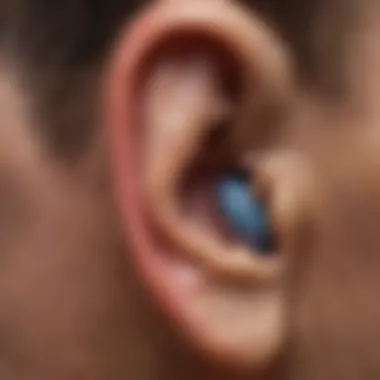
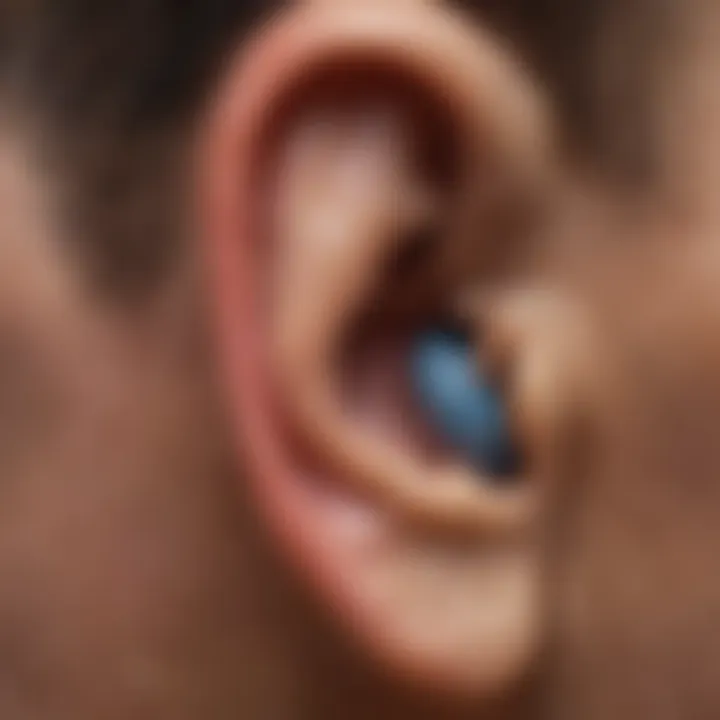
The key characteristic of ear irrigation is its ability to remove not only trapped water but also debris or wax that could be contributing to the blockage. This makes it an attractive choice for many patients, especially those who frequently engage in activities around water. A unique feature of ear irrigation is the precision with which it can be administered, offering a level of assurance that home methods may lack.
However, it's important to consider that ear irrigation may not be suitable for everyone. People with certain ear conditions or injuries should avoid this procedure due to potential risks like further irritation or damage to the ear. Consulting with a healthcare professional will determine if this is a viable option for you.
Suction Techniques
Suction techniques present another avenue for medically clearing water from the ear. This involves the use of specialized equipment that creates a gentle suction to dislodge any trapped fluid effectively. What makes suction techniques appealing is that they can be performed swiftly, offering immediate relief.
A key advantage of suction is that it minimizes the risk of introducing any foreign substances into the ear, unlike other methods that might involve fluids. It’s a popular choice among healthcare practitioners when other methods have failed or when the situation is more complex.
The downside is that this method may not always be available outside of a medical setting and typically requires the skill of a trained professional. Additionally, using suction could lead to discomfort if not done properly, making professional oversight crucial. Knowing all options available ensures a clearer understanding of how to tackle water trapped in the ear effectively.
Preventative Measures to Avoid Water in the Ear
Water entering the ear is a common frustration, especially for those who engage in aquatic activities. This section highlights the importance of understanding preventative measures that can decrease the likelihood of water getting trapped in the ear. Taking proactive steps can save you from discomfort and minimize the risk of infections, which may arise from lingering moisture.
Choosing Appropriate Ear Protection
When it comes to participating in water sports, the right ear protection can be a game changer. Whether you’re swimming, surfing, or kayaking, consider investing in earplugs designed for watersports. Devices like silicone earplugs or custom-molded plugs can effectively block out water while allowing you to still hear important sounds in your environment. Select ones that fit snugly to prevent any water from seeping through.
Another option is to use a headband that covers the ears. This can help keep water away during splashes or powerful waves, acting as a barrier that enhances overall ear protection. In addition, some opt for ear bands that can help keep earplugs in position during vigorous movements.
These protective measures not only offer convenience but also add a layer of safety, particularly for those with past ear problems or sensitivities. It’s much easier to enjoy a day on the water when you can engage without worrying about discomfort later.
Techniques for Efficient Water Exit Post-Activity
After a day of fun in the water, the last thing you want is to feel like you’re carrying around a mini swimming pool in your ears. Thus, employing the right techniques to remove any trapped water can be beneficial, nearly making it a part of your routine.
- Tilt and Drain: Begin by tilting your head in the direction of the affected ear. Just like a funnel, this simple move allows gravity to assist in draining the water. You can gently tug at your earlobe downwards while tilting to create an opening for the water to escape.
- Jump or Shake: While maintaining the tilt, a light shake of your head can help jar the water loose. Think of it as trying to shake out the last bits of sand from a beach towel. If possible, you might also try a soft jump or two, which sometimes adds just enough movement to dislodge that stubborn water.
- Jaw Movements: Occasionally, making a chewing motion or yawning can help move the jawbone. This action can create slight changes in pressure that may push the water out. It’s a handy tip that doesn’t require any props or equipment, making it ideal for sudden water exits post-swim.
By incorporating these efficient techniques, you can greatly reduce the risks associated with water trapped in your ears, giving you an uninterrupted aquatic experience.
Remember: The key to effective prevention is awareness. Understanding your environment and taking proactive measures will help ensure your ears remain dry and healthy after enjoying water activities.
Understanding Risks Associated with Trapped Water
When it comes to enjoying water activities, it’s easy to overlook the underlying risks that can occur once water gets lodged in the ear. Ignoring these risks can lead to uncomfortable situations, or even worse, increase the likelihood of developing health complications. Understanding these dangers is crucial, especially for athletes and outdoor enthusiasts who frequently engage in water sports.
Awareness of these pitfalls not only helps in taking precautionary measures but also in recognizing symptoms that may arise later. Ignoring trapped water isn’t just a casual annoyance; it can spiral into serious medical concerns if not handled correctly.
Epilogue and Final Considerations
Summarizing Effective Strategies
The strategies discussed throughout this article provide a framework for addressing the common issue of water trapped in the ear. Here’s a recap:
- Gravity Techniques: Simply tilting the head or lying sideways can accomplish a surprising amount of relief.
- Heat Application: Warm compresses or controlled heat from a hair dryer can effectively help evaporate trapped moisture.
- Alcohol and Vinegar Mixtures: The combination of these substances can aid in both drying out the ear and inhibiting bacterial growth, making it a simple yet effective home remedy.
- Professional Help: If symptoms persist, seeking advice from a healthcare provider should not be an afterthought, as certain medical procedures can ensure thorough cleaning and prevention of further issues.
By employing these strategies thoughtfully, athletes and adventurous spirits alike can revel in their activities without the nagging concern of unwanted water retention.
Encouragement for Safe Practices
When it comes to enjoying water sports, safety should sit at the top of the priority list. The importance of proactive ear care cannot be overstated.
- Use of Earplugs: Consider incorporating well-fitted earplugs during activities to minimize water entry.
- Post-activity Routines: Establish post-water activities checklists to effectively address any ear discomfort immediately, rather than letting it linger.
- Stay Informed: Regularly reviewing methods for ear care and remaining aware of personal anatomy can yield substantial benefits.
Ultimately, combining these methods with awareness of risks ensures not just an enjoyable time in the water but also a commitment to long-term ear health. As outdoor enthusiasts, let’s prioritize good practices, allowing future aquatic endeavors to remain not only fun but also safe.















